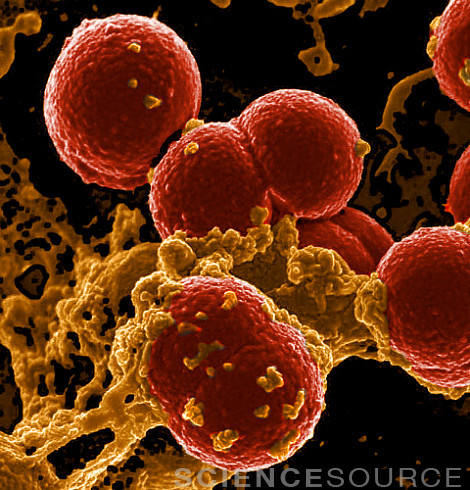Image JC3202 (Neutrophil Ingesting MRSA Bacteria)Colorized scanning electron micrograph of Neut
Image JC3202 (Neutrophil Ingesting MRSA Bacteria)Colorized scanning electron micrograph of Neutrophil white blood cells (light orange) ingesting Methicillin-Resistant Staphylococcus Aureus bacteria (deep red). Methicillin-Resistant Staphylococcus Aureus (MRSA), also called multidrug-resistant staphylococcus aureus and oxacillin-resistant staphylococcus aureus (ORSA). This bacterium is responsible for several difficult-to-treat infections in humans.SEE OTHER RESISTANT PATHOGENSMRSA is any strain of Staphylococcus aureus that has developed resistance to beta-lactam antibiotics, like penicillins and cephalosporins. Strains unable to resist these antibiotics are classified as methicillin-sensitive Staphylococcus aureus, or MSSA. MRSA is especially troublesome in hospitals and nursing homes, where patients with open wounds, invasive devices, and weakened immune systems are at greater risk of infection than the general public. If not treated quickly, MRSA infections can cause sepsis and death.It is usually spread by direct contact with an infected wound or from contaminated hands, usually those of healthcare providers. Also, people who carry MRSA but do not have signs of infection can spread the bacteria to others.The only way to know if MRSA is the cause of an infection is to perform a laboratory culture of the bacteria. Obtaining bacteria to culture is a procedure done by a doctor or nurse.© NIAID / Science Source -- source link
#multidrug resistant#staphylococcus aureus#pathogens#medicine#stock photos#science images#science source
